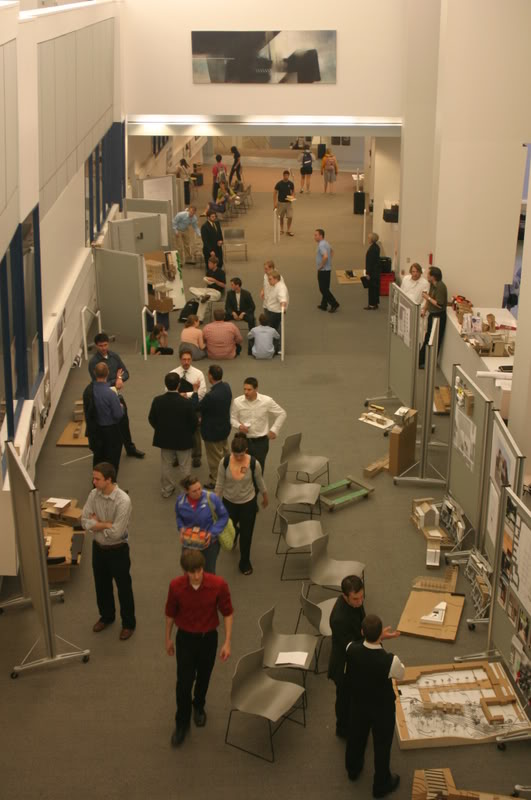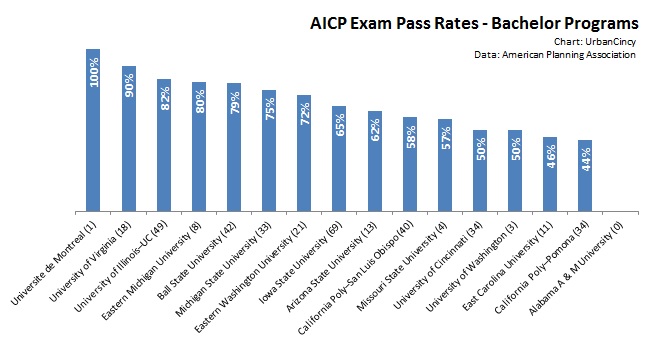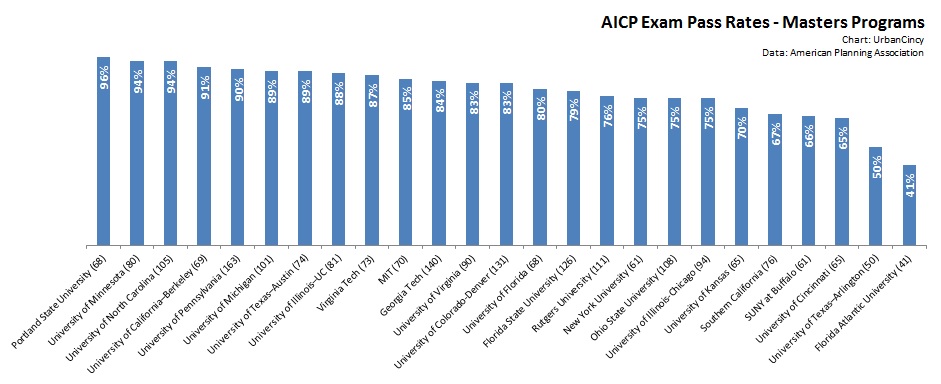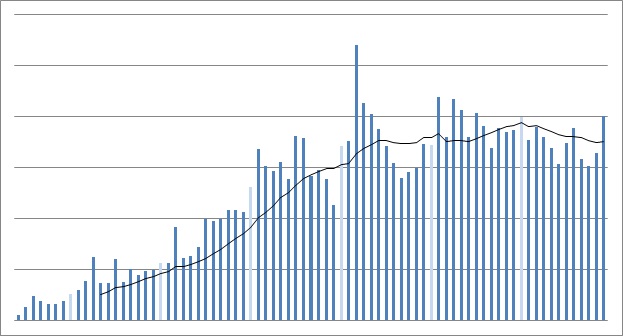Another year has come and gone, and I wanted to take this opportunity to recap some of the highlights from 2013 while also looking to the future.
Our readership remained constant in 2013, with accelerated growth in Q4. We expect readership levels to hold at those increased Q4 rates throughout 2014, while recording some additional modest growth. Perhaps not surprisingly, our biggest month was December when the streetcar battle culminated.
More people listened to The UrbanCincy Podcast – now entering its second year – than ever before. The most popular episode last year was our yearly recap at the start of 2013 followed by our interviews with David Ginsburg from DCI and Kevin Wright from the Walnut Hills Redevelopment Foundation. Overall we had more than 109,000 downloads of The UrbanCincy Podcast in 2013 and averaged nearly 7,000 downloads per episode.

Staff Changes
Our staff also grew and changed a bit last year. As many of you know, I am temporarily on assignment in Seoul and John Yung has become our local area manager. Travis Estell continues to serve as our technologist and podcast manager, while Jake Mecklenborg continues to perform in-depth reporting on transportation issues and produce much of our photography.
We added two new staff writers in 2013 as well – Caitlin Behle and Paige Mallot. They will be covering a variety of topics, but will help expand UrbanCincy’s coverage of arts and entertainment. A third new staff writer – Jacob Fessler – has contributed some already, but will begin his work covering the region’s urban economics and industry in 2014. We also began working with the talented Nate Wessel and Andrew Stahlke to produce custom maps and videos that complement our stories.
We have an incredible team and none of this would be possible without their dedication and hard work. If you see them out and about, you should treat them to a cup coffee or a glass of beer.
Partnerships
In February we entered into an agreement with the Niehoff Urban Studio to produce events that highlight the interdisciplinary work and research performed by students at the University of Cincinnati. That led to our Metropolis & Mobility event in April and our Urbanist Candidates Forum just prior to November’s election.
We have continued to bolster our exclusive partnership with the Business Courier as well. In addition to our readers getting discounted access to a digital premium subscription, we are also sharing more of our content with them so that our reporting on the city reaches an even larger audience in both print and on the web.
In 2014 we hope to enter into additional partnerships that will help get our content to even more people throughout the region and engage more people with the city.
Events
After starting URBANexchange in 2012, we have continued to host the monthly social event at the Moerlein Lager House. Now typically on the first Thursdays of each month, the events consistently draw a diverse collection of 20 to 40 people interested in urbanism. Many of these people are either new to Cincinnati or are looking to get more involved, and I am happy to say that these events are helping grow Cincinnati’s urbanist community.
In 2014 we will continue hosting the events and continue to engage you with area policy makers and influencers, and work to gather your thoughts and ideas about important policy issues. Plus, we hope to keep giving away unique prizes. Hopefully you can join us at our first URBANexchange of the New Year on Thursday, January 9 from 5:30pm to 8:30pm in the Moerlein Lager House’s biergarten.
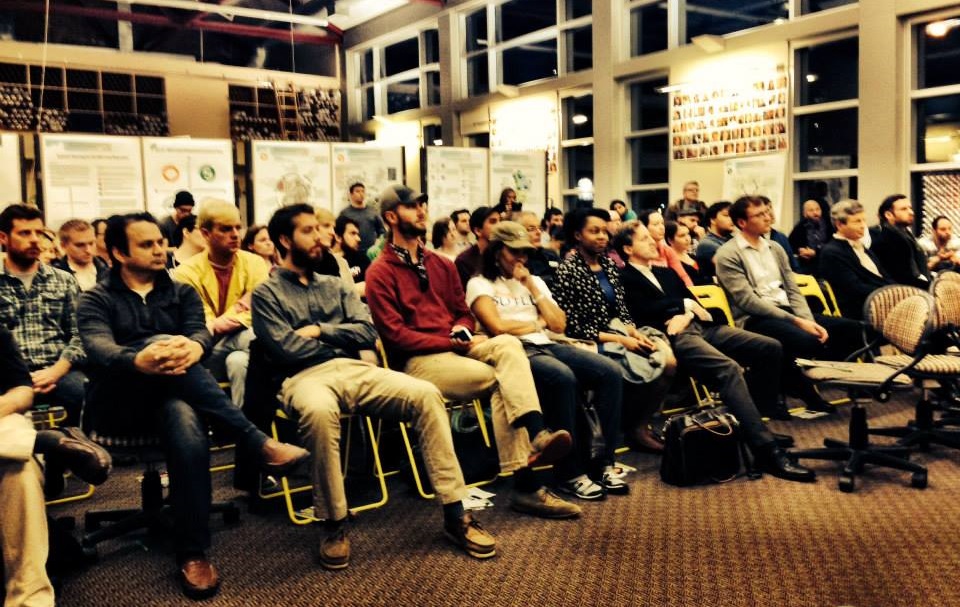
Content
One of the things UrbanCincy has always tried to do is connect area residents and visitors with the things happening in the city. This is still true today, but we are now fortunate to have a national audience. So while our focus is still on providing local coverage of public policy, urban design, transportation, arts and culture, we are now also connecting people from around the country with what is taking place here.
In 2013 we published 145 original stories, published 10 perspectives from readers in guest editorials, shared 103 of our insights about what we thought was interesting news from elsewhere in our Up To Speed posts, and produced 16 podcasts. Our ten most read stories in 2013 were:
- December 2, 2013: The Day Chaos Ruled City Hall: http://urbn.cc/p3ri
- Proposed 210-Unit Apartment Development Would Demolish Historic Christy’s & Lenhardt’s: http://urbn.cc/p2xy
- Final Designs Revealed for $125M Dunnhumby Centre Tower: http://urbn.cc/p3i3
- Pogue’s Garage to Make Way for 30-Story Residential Tower, Grocery Store: http://urbn.cc/p2yx
- EDITORIAL: Localizing Operating Costs for Streetcar Sets Dangerous Precedent: http://urbn.cc/p3sl
- GUEST EDITORIAL: Get Over It, Then Get Ready: http://urbn.cc/p3pk
- GUEST EDITORIAL: Horseshoe Casino Fails to Deliver on Urban Design: http://urbn.cc/p2zb
- IMAGE: Cincinnati to Grow Taller in the Coming Years: http://urbn.cc/p37p
- PHOTOS: Historic Glencoe-Auburn Place Row Houses Are Being Demolished: http://urbn.cc/p31l
- The Plot Continues to Thicken for Cincinnati’s $133M Streetcar Project: http://urbn.cc/p3s7
We also had two other stories that garnered a significant amount of interest by the way of comments, but didn’t crack the top ten for readership. The story readers commented on the most in 2013 was Paige’s opinion piece about Diner En Blanc held at Washington Park (104), and the second most comments (89) were left on our editorial calling for the consolidation of local governments in Hamilton County.
Our team also traveled to help bring additional perspective from other cities throughout the country and abroad. In 2013 John brought you stories from Europe and Portland; Jake traveled to Nashville; and I filed reports from Kansas City, Los Angeles, Salt Lake City, Seoul and Chicago. We will continue to use our travel to bring even more perspective into the issues we cover in Cincinnati. In 2014 we have already planned reports from Denver, Houston, Dallas, Minneapolis, Bangkok, Seattle, Hong Kong, Seoul, Nashville and Atlanta.
In 2014 you will also see us advocate more for specific projects and policy recommendations, based on our research and collaborations. In the past we have advocated for changing the city’s parking requirements, overhauling the city’s zoning code, and how to use the Riverfront Transit Center. In the coming weeks you will hear even more specific solutions from our team about how to address various problems and opportunities in our city today.
It has been nearly seven years since UrbanCincy started, and we are thrilled it is has become one of the largest independent sources for news in the region, and one of the most well-read websites focused on urbanism in the country.
We have some big plans for the year ahead and we hope that you will stick along for the ride. And while you’re at it, why don’t you bring a few friends. Thanks for all of your support.
